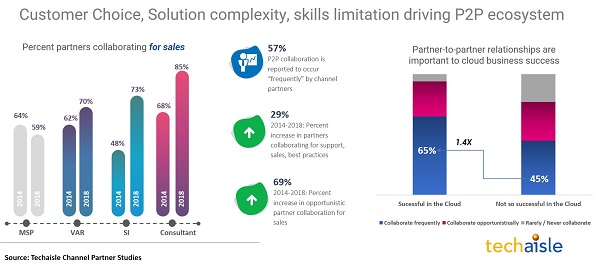1. Connected business will be everyone’s problem.
The key focus of business investment will be more about the “work”: the ways that an increasingly-connected business can support pursuit of previously-unattainable objectives. The most important SMB & Midmarket technology-related adoption in 2020 will be this focus on connectedness – cloud, platforms, edge, devices, applications, security, collaboration, workspaces and insights. With the connective fabric rapidly becoming ubiquitous, businesses of all types and sizes will move beyond just the network access, and concentrate instead on using technologies to drive progress across the four pillars of digital transformation: operational effi-ciency, customer intimacy, employee empowerment and product innovation.
2. Momentum building for consumption-based IT acquisition.
Increasingly within SMBs and midmarket firms discrete sales of individual products or integrated systems will be replaced by agreements to provide IT capacity and business functionality “as-a-Service”. In 2020, the trend will be more midmarket driven than small businesses. 20% of midmarket firms will move towards OPEX-based agreements where these firms will look for flexibility and will prefer to acquire technology based on usage – namely IT consumption model – driven primarily because of current IT asset under-utilization.
3. Customer intimacy will take a whole new meaning.
Every SMBs’ survival is dependent upon customers and 2020 will see a ground-breaking year when customer intimacy (acquisition, retention, experience & satisfaction) will drive IT adoption and business process evolution. By the end of 2020, for 45% of SMBs, need for customer intimacy will drive IT adoption and 76% of new SaaS adoption will be customer focused. As a result, 15% of small businesses and 24% of midmarket firms will have “Top Notch” customer facing digital presence.
4. Need for Embedded Collaboration will be clear and present.
Anywhere, anytime also means any type of collaboration. Collaboration solutions cannot be deployed on stand-alone platforms – they need to be viewed as a framework for integrating multiple capabilities, native to multiple applications. By the end of 2020, 80% of SMBs will benefit from embedded collaboration and for high-growth, innovative businesses, effective, e¬fficient collaboration will be in their organizational DNA to deliver decision agility, business agility and innovation agility.
5. Regardless of the question, analytics will provide an answer.
In 2020, SMBs will see a new attitude and culture that will value and use data as a meaningful way to gauge overall performance and specific areas of interest at a glance will become prevalent. SMBs will demand Key Performance Indicators (KPIs) as a standard part of application architectures as well as a meta-directory of KPIs that all applications can access. It may finally become possible for SMBs and Midmarket firms measure and optimize for elusive objectives like Return on Marketing Investment, Optimal Pricing, Cost of Acquisition and Lifetime Customer Value. By the end of 2020, 15% of SMBs will be highly data driven and 30% will be using cloud-based prescriptive analytics and 50% of midmarket firms will demand AI-driven analytical platforms to proactively prescribe actions that will mitigate risk / increase opportunity within the predicted future.
















